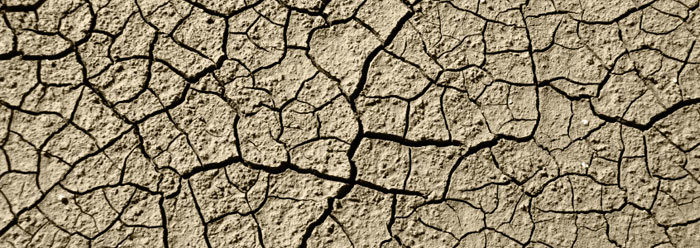Evolution pretends to be biology but it plays us for fools because it provides no successful experimental documentation. Let's see if there is one scintilla of scientific evidence to support evolution.
Most biology textbooks show a glass apparatus in which the precursors for amino acids were boiled and electrically sparked for a week, and sure enough, there were trace amounts of a few amino acids. The implication is that if similar, unthinking processes were continued, then a living cell would evolve. Such logic is like stating that automobiles evolved long ago by means of rubber sap, sand, iron ore, and coal falling into a volcano. The iron ore and the carbon in the coal made steel, the sand melted and made glass, and the sap vulcanized and made rubber. Then after billions and billions of trials and errors, the text may say, there evolved spontaneously better and better pistons, cylinders, whole engines with spark plugs and transmissions, axles on four wheels with rubber tires under bodies of steel with glass windows, windshield wipers, headlights, and tanks full of gasoline. The text might state that the first cell and all life evolved in a similar way.
Scientists note that such a tall tale is a fantasy of a peculiar type. If someone said he had bought a brand-new car the night before and in the morning found it rusted and rotted to a pile of powder, then we would note that his story described correctly the direction of the laws of physics, but rust and rot do not occur that fast. Contrarily, if he says that a pile of sand and iron ore evolved into a brand-new car, then we recognize this as an inverted fantasy because it is the exact opposite of the way reality works. So, the amino acid and volcano car examples are not merely fantasies, they are inverted fantasies. They are not the cow-jumped-over-the-moon kind of tall tales, because cows can jump a low fence. They are the grass-ate-the-cow kind of tall tales, the inverted, upside-down kind of fantasy.
One way that scientists reject tall tales is with observation. Scientists are persuaded by observing cars coming off the assembly lines in Detroit and note that no one has ever seen a car spontaneously, nor purposefully, evolved in or out of a volcano. Scientists therefore unequivocally conclude that all cars were created by intelligent design. But what about life? Is biology sufficient to explain life or must it be supplemented by inverted evolutionary concepts to fully describe the biological world? Let us pursue this answer by examining the life cycle of a representative life form.
Survival by Means of Genetic Reserves
The monarch butterfly is a good example of biology because all observations can be verified. Its whole life cycle is sequenced from one allotment of deoxyribonucleic acid (DNA) and can be observed in 60 days. The monarch butterfly's egg is oval and about one millimeter long. It hatches in three days to a caterpillar which spins a chrysalis around itself then hatches as the butterfly. Then it has the ability to fly, migrate, eat, mate, and procreate. Shortly after completion of their reproductive functions, both male and female become dehydrated and die.
Unique Sequential Genetic Reserves
The life cycle of the monarch butterfly teaches that within the seemingly inert egg are all of the genetic instructions to form a sixteen-legged caterpillar and a six-legged butterfly. There was no physical manifestation of the caterpillar when it was an egg just as there was no physical manifestation of the butterfly when it was a caterpillar. There was a manifested morphology while there were unmanifested in the organism's genetic reserves meticulously planned transitional structures and different morphologies. To observe such remarkable transformations in 60 days teaches an important lesson on genetic reserves. These incredibly complex transformations, which no human engineer can blueprint, may be called sequential genetic reserves. They occur once in a rigorous order to attain adulthood and do not occur again. Every complex organism has them. Some do not transform from sixteen legs to six legs, some do not transform from pedestrians to flyers, but the transformations to adulthood are no less remarkable. Every multicelled life form must grow and develop from an egg or seed to an adult configuration and that requires continuous structural and functional alterations that are molecularly planned, organized, coordinated, controlled, and commanded beyond human comprehension. We do not know how the DNA did it, but we do know that such mega-engineering could not have been done brainlessly the way evolution pretends. There are other kinds of genetic reserves.
Punctual and Precise Cyclical Genetic Reserves
When the arctic fox has a gray coat of fur in summer, which blends with the tundra, it has in its genetic reserve the white fur it will wear in winter. The fox's white fur in winter blends with the snow but its genetic reserve still contains the gray fur for the following summer. Similarly, the rock ptarmigan draws from its genetic reserves to display feathers of mottled reddish-brown in spring, then brownish-gray in fall, then white in winter. Trees leaf and bloom in spring, fruit in summer, then drop their leaves in the fall. Birds nest and rear young in spring and summer, then migrate in the fall. These periodicities are from the organism's cyclical DNA genetic reserves and go on repetitively for its lifetime with punctuality and precision. The fox has white fur for the first snowfall, not the last, and gray fur for the first thaw, not a week or a month later. And it never grows red or green or orange or blue fur by trial and error like random processes might propose. If its cyclical genetic reserves were not engineered for precision and punctuality, it could not survive one season.
Punctual and Precise Arousal Genetic Reserves
Exercise in the heat arouses the genetic reserve to synthesize heat-shock proteins that enable activity in the hot environment. Activity patterns arouse new proteins for muscle actin and myosin contractile filaments. Skeletal muscle hypertrophy and bradycardia are aroused from training, and skeletal muscle atrophy and tachycardia from bed rest. An increased concentration of red blood cells and 2,3-diphospho-glycerate are aroused by sojourns at high altitude, then lost by a return to sea level. New collateral coronary arteries are synthesized in two months to get around blocked arteries. New bone cells are aroused by fractures, and new scar tissue from abrasions, cuts, or tears. These are but a few of the innumerable DNA genetic reserves manifested by arousal that are built into each life form. They may be aroused in a matter of hours, not millions of years. They cannot be incorporated by evolution because the organism cannot experience what is needed until the event, and it will not survive unless the need is immediately satisfied. Vacant-minded evolution cannot plan or organize or coordinate or command or control change because it is brainless. What is brainless is simple (to the extreme) and cannot comprehend or act in what is complex to the extreme: life and survival.
All Genetic Reserves Function At Once
From conception to death, the DNA of the life form makes available, as needed, all genetic reserves and there is no interference amongst them. For example, the life form may arouse simultaneously the separate proteins for heat shock and altitude as it climbs a mountain in the heat of the day as well as the proteins to withstand the bitter cold at night. Always at the ready, the abundant genetic reserves may manifest themselves in any appropriate pattern at any time. They provide each life form with remarkable arrays of morphological, functional, and behavioral mechanisms to meet punctually and precisely the variabilities of any environment and to survive the extremes. And they do it right the first time. They do not do it by magic or blind iteration over alleged millions of years, as the inverted evolutionist superstition would have us believe. If the arctic fox had to evolve its white coat for the first snowfall by chance, it would not have survived one day. Like every life form, it needed the versatility, precision, and punctuality of all its genetic reserves from conception or it would never have survived even to being born.
Are Response, Adaptation, Acclimation, and Acclimatization, Evolution or Design?
If a person exercises, the heart rate will increase and this is called a response. If a person trains for weeks with that exact exercise, then the heart rate will be lower than the initial response. That lowered heart rate for the same exercise might be called, adaptation. If such a modified response is instigated by an environment, then it may be called acclimation. If in response to a change in climate, then it may be called acclimatization. Calling any of these evolution misleads us because the immediate response is an attribute of the current physiological configuration from the DNA. From a store of arousal genetic reserves in the DNA, that configuration dynamically masters new requirements and stays current. Those reserves will synthesize the appropriate new proteins whether the stimulus comes from within, like the exercise, or from outside like the climate, or something else in the environment. By appropriating the four responses, evolutionists not only mislead us but they also complicate what is in reality quite simple. The design takes care of everything. Evolution has nothing to do and that is why biology has eliminated it.
Are There Speciation, Micro- and Macroevolution in Reality Biology?
Anyone can observe remarkable variation in biology. All brothers and sisters are different. Even identical twins have different fingerprints and behaviors. The Chihuahua is not a different species. "Speciation" and "microevolution" are attempts to appropriate the immense variability of biology. All Chihuahuas are different but not one will ever evolve to a cat or a raccoon or anything else. So too "macroevolution" as an extension of microevolution is a fraudulent misrepresentation that has never been seen because it is an inverted fantasy like grass eating a cow.
Life Described Scientifically
As anyone can observe, the Primordial Law of Biology is minor vita ex vita, life arises only from life and always with less vitality. Biology is under the jurisdiction of the laws of the universe, the propaganda of evolution notwithstanding. The Primordial Law of the Universe is natura semper scalas descendet, nature always descends, that is, devolves. Therefore, devolution, never evolution, is the relentless, inescapable law of the universe. The true nature of the universe, and therefore biology, is devolution, the exact opposite of masquerading evolution interloping in public school and university biology textbooks as science.
The history of each individual in each generation is the same as for the population, but on a smaller scale. The individual is conceived with its greatest vitality and progressively devolves that vitality until death. Just as no individual can live forever, so no population can live forever. All life forms individually and collectively are fixed and mortal.
From environmental pollutants that cause genetic disorders, populations lose their vitality until they cannot reproduce viable offspring. That is the advent of extinction. By contrast, the evolution superstition in biology textbooks is a multi-inverted fantasy because it not only teaches that life can spring up like the volcano car, but that life and the car can perfect themselves forever like fictional perpetual motion machines.
Conclusion
As we have seen, biology is the best explanation of life. It is the most complete, the most observable, and the most verifiable with experiments. There is no need to employ any of the unnecessary, misleading, multi-inverted, and unobservable complexities of evolution superstition. Biology completely eliminates evolution.
Reference
Mastropaolo, Joseph. The Rise and Fall of Evolution, A Scientific Examination. 2003, pp. 115-123. Manuscript in revision.
*Dr. Mastropaolo is an adjunct professor of physiology for the ICR Graduate School.




















